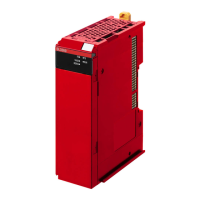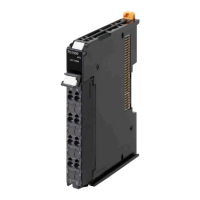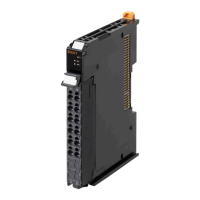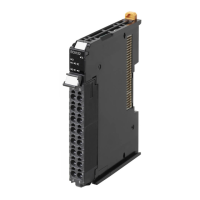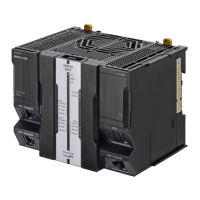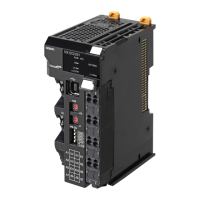Term Description
safety input device An input device that is designed with special safety measures for use in safety controls.
The generic term for safety input devices, such as emergency stop pushbutton switches and
safety switches.
safety output device An output device that is designed with special safety measures for use in safety controls.
The generic term for safety output devices, such as safety relays.
EtherNet/IP Slave Terminal An EtherNet/IP Slave Unit Terminal is a building-block slave that is created by mounting a
group of NX Units.
Safety program User programming for safety controls in the Safety CPU Unit.
This term is used to dif
ferentiate safety programs from user programs in the NJ/NX-series
CPU Unit.
Safety programs are programmed in the FBD language.
FBD language The abbreviation for the function block diagram programming language. This is a graphical
language used to program algorithms with connecting lines that represent the flow of inputs
and data, and rectangular boxes that represent functions or function blocks.
Unlike the ladder diagram language, the FBD language does not have bus bars, and the
connecting lines represent the flow of inputs and data rather than the power flow.
Algorithms are executed in order from top to bottom in units that are called networks. A net-
work consists of configuration elements that use connecting lines to connect inputs to out-
puts. The FBD language does not have an END instruction. Execution for the task period
ends when the last network is executed.
Y
ou use the FBD language to write safety programs for the Safety CPU Unit.
user program All of the programs that are created by the user. It refers to the programs for standard con-
trols of the NJ/NX-series CPU Units and the safety program of the Safety CPU Units.
operating mode The status of the Safety CPU Unit, when it is in normal operation, that the user changes to
run or check the operation of the Safety CPU Unit.
There are the three modes: PROGRAM mode, DEBUG mode, and RUN mode.
You can use DEBUG mode only when the Sysmac Studio is online with the Safety CPU Unit.
safety validation The process of appending confirmation information to the safety application data if safety val-
idation testing demonstrates that the safety controls meet the required specifications of a
safety system.
You execute the safety validation from the Sysmac Studio when the Safety CPU Unit is in
DEBUG mode. The validated safety programs are automatically transferred to the non-vola-
tile memory of the Safety CPU Unit.
DEBUG mode The mode that is used to debug unvalidated safety programs. DEBUG mode is only available
when the Sysmac Studio is online with the Safety CPU Unit.
Use this mode to check that the safety programs and external devices operate correctly. Af-
ter you confirm that the system meets the required specifications, perform the safety valida-
tion. This will enable you to change to RUN mode.
When you change from PROGRAM mode to DEBUG mode, the unvalidated safety programs
are automatically transferred to the main memory of the Safety CPU Unit.
DEBUG mode (RUN) A status that indicates that an unvalidated safety program is in execution in DEBUG mode.
You can control BOOL variables, use forced refreshing, and change present values.
DEBUG mode (ST
OPPED) A status that indicates that an unvalidated safety program is stopped in DEBUG mode. You
can control BOOL variables, use forced refreshing, and change present values.
PROGRAM mode A mode indicates that execution of the safety program is stopped. You cannot control BOOL
variables, use forced refreshing, or change present values.
RUN mode A mode that indicates that execution of the validated safety programs is in progress. Unlike
DEBUG mode (RUN), the validated safety programs in the non-volatile memory of the Safety
CPU Unit are executed. Y
ou cannot control BOOL variables, use forced refreshing, or
change present values.
before safety validation A status that indicates that safety validation has not been performed on the safety applica-
tion data from the Sysmac Studio because it has not yet been determined whether the safety
controls meet the required specifications of the safety system.
after safety validation A status indicates that safety validation has been performed on the safety application data
from the Sysmac Studio because it has been determined that the safety controls meet the
required specifications of the safety system.
Terminology
40
NX-series Safety Control Unit User's Manual (Z930)

